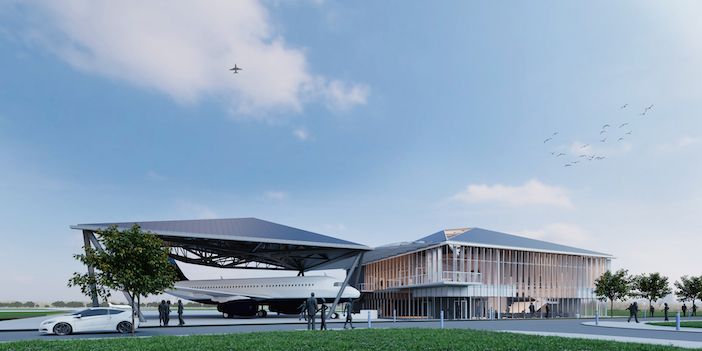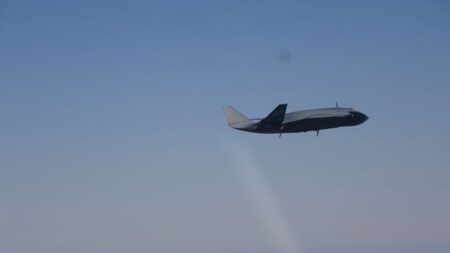Cranfield University in the UK has officially received its new Digital Aviation and Research Technology Centre from the building contractor.
The £65 million (US$86 million) research facility is located next to Cranfield’s airport and consists of a central building with research laboratories and a partially covered hangar connected to Cranfield’s 737-400 aircraft through an airport-style air bridge.
Researchers at the Digital Aviation and Research Technology Centre (DARTeC) are working with industry to increase the use of digital technologies in the air transport sector. The building includes collaborative open plan office space where staff, students and partners can engage and share ideas.
Professor Graham Braithwaite, project lead and director of transport systems at Cranfield University said, “Formally taking ownership of the DARTeC building from R G Carter marks a milestone in our project to create this digital aviation research centre. The futuristic-looking building is a stunning addition to the Cranfield skyline and will be a key part of our global research airport as we continue our work in developing the aircraft, airports, airlines and airspace management systems of the future.
The DARTeC facility has been constructed with almost 300 tonnes of structural steel and 1,800 square metres of standing seam roofing over the two buildings.
DARTeC aims to address some of the main research challenges facing the aviation industry, including the integration of drones into civilian airspace, increasing the efficiency of airports through technological advances, the use self-sensing/aware and self-healing/repair technologies in aircraft and the introduction of the first operational digital air traffic control tower in the UK.
DARTeC consortium partners include Aveillant, Blue Bear Systems Research, Boeing, BOXARR, the Connected Places Catapult, Cranfield University, Etihad Airways, Inmarsat, the International Air Transport Association (IATA), the IVHM Centre, Saab, the Satellite Applications Catapult and Thales, with co-investment support from Research England.





